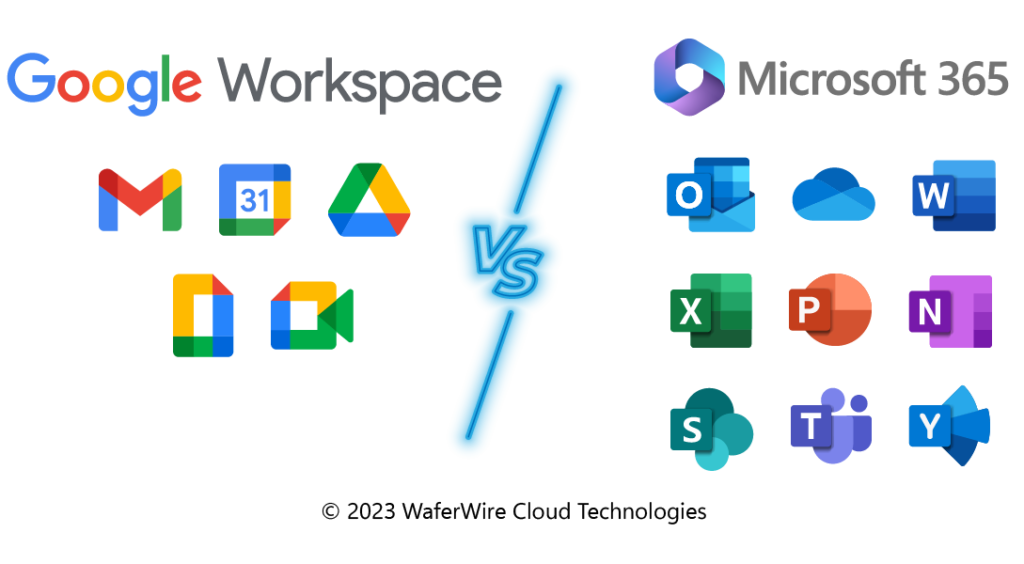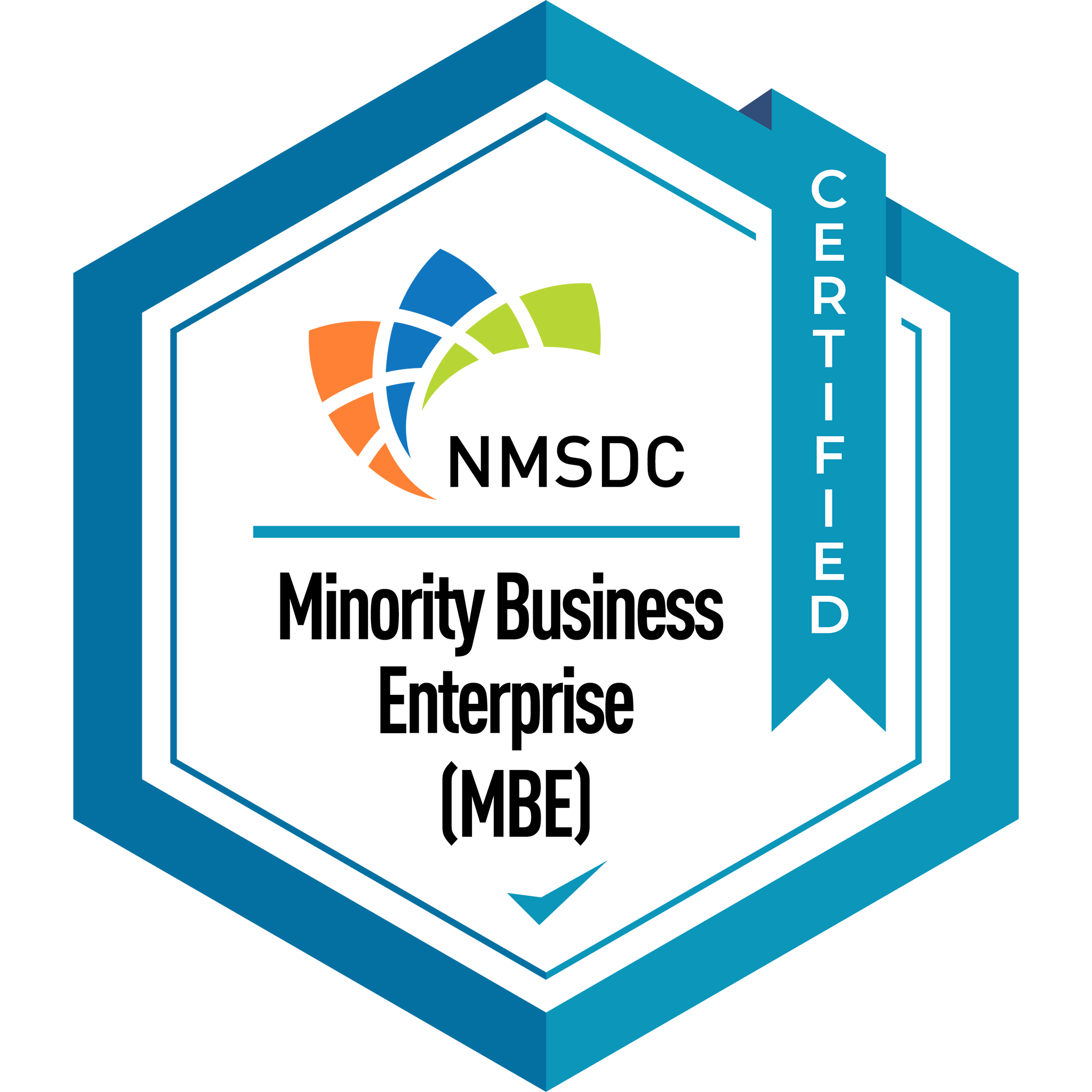When Google said, “It’s time for long-time small business users to pay up,” it felt like an alarm to switch to paid offerings after businesses got hooked up to its G Suite legacy free edition.
Google Workspace, formerly known as G-Suite, has over 3 billion total users worldwide, and more than 7 million organizations or individuals paying for additional tools and extended customer support.
Then why would many business owners and managers look for alternatives? Is it only because of the deadline that is not enough to decide whether to pay or abandon the Google services? Or was it the business recovery period where sales dropped, and revenues were halved, and Google was quite pricey in this period?
Which is a better and more comprehensive collaboration and productivity suite- Google Workspace Vs. Microsoft 365?

Both Google Workspace and Microsoft 365 are productivity and collaboration suites for businesses of all sizes. They allow you to perform tasks in the cloud like:
- Sending and receiving business emails
- Calendar management
- File management
- Creating, sharing, and storing documents, presentations, and spreadsheets
- Video and voice conferencing
- Team collaboration
You may wonder which is better- Google Workspace or Microsoft 365? In fact, both are collaborative platforms designed to increase the productivity of your employees. The answer is- It depends on your business and its specific requirements.
A little bit more about Microsoft 365
You’ll get everything you need to be productive and collaborative with Microsoft 365. This includes Microsoft Office 365, Windows 11, Enterprise Mobility & Security (EMS), and Dynamics 365.
With Microsoft 365, you get the following undeniable business benefits:
-
- Access from anywhere, on any device: As Microsoft 365 is a cloud-based platform, you can store the files in the cloud and access them from anywhere, on any device, at any time, with an internet connection. This is a blessing for your mobile workforce who want to access apps and documents on-the-go.
- Secure environment: Microsoft 365 offers a highly secure ecosystem with robust security practices like multi-factor authentication (MFA), threat detection, anti-malware, baseline anti-phishing, and anti-spam protection. You get advanced security features like device management, advanced threat protection, and information protection with Microsoft 365 Business Premium.
- Enhanced communication: Microsoft 365 offers a wide range of tools to keep your communication centralized and straight across various devices and time zones.
- a. Communicate and collaborate across multiple teams and channels with Microsoft Teams.
b. Knowledge management and intelligent intranet with SharePoint.
c. Social networking and live events with Yammer.
d. Create video content for your specific target audience with Stream.
e. Send and receive emails and manage your calendar, tasks, and contacts with Outlook.
f. Focus on the employee experience with a suite of apps in Viva.
- a. Communicate and collaborate across multiple teams and channels with Microsoft Teams.
- Pricing: Microsoft 365 has a complicated yet flexible pricing options:
- a. Home
b. Business
c. Enterprise
d. Government
e. Non-profit
f. Education
- a. Home
Depending on your business, you can choose the most appropriate pricing option based on your specific needs.
Comparatively, Google Workspace has a straightforward pricing plan that is broadly classified as Business starter, Business Standard, Business Plus, and Enterprise. The key differences between these plans are storage, cap on the number of users, number of participants in video calls, security features, searching features, and app creation tools.
| Some Tips: Before deciding on a particular plan for Microsoft 365, note: |
|---|
|
|
|
|
|
|
|
- Business continuity: In the event of a disaster or natural calamity, your files, emails, and data are secured in the cloud. This is because the information stored in the cloud is regularly backed up. Therefore, no matter what happens to your physical devices, your data, emails, files, folders, and documents will always be safe and can be restored if needed.
- Upgrades: You can work without worrying about upgrading your office apps. Due to the subscription to your license, upgrades happen automatically at regular intervals. So, do not worry about being on the latest version; it will be automatic.
- Centralized collaboration: Microsoft 365 allows you to create, share, and edit documents in real-time. You have access to shared mailboxes, calendars, and contacts as well.
Did not get time to read and scrolled through it to save time?
So, why choose Microsoft 365 over Google Workspace?
Although Google Workspace offers most of the same productivity and collaboration features as Microsoft 365, yet there are a couple of pros leaving Google Workspace.
Scalability and flexibility: Microsoft 365 offer the potential to grow, from a technical and user standpoint, meeting your changing needs. While Google Workspace covers the needs of some organizations, it lacks the flexibility, features, and functionalities to cover the needs of advanced users and large organizations.
Single sign-on: Unlike Google Workspace, Microsoft 365 allows users to access their apps and services with a single sign-on. This allows the user to manage user access to the tools when needed quickly and easily.
Access to desktop applications: Microsoft 365 provides access to a wide range of desktop applications, in contrast to Google Workspace. They include Microsoft Word, Excel, PowerPoint, and Outlook. This allows users to select the most appropriate tool without compromising functionality or performance. The use of these tools is essential for remote workers and users who must work offline to be productive and collaborative.
Optimal user experience: An intuitive, seamless user experience is the hallmark of Microsoft 365. You will find that Microsoft 365 makes it easy to access your data whether you are on a mobile device or a desktop computer.
In contrast, Google Apps does not allow users to share Office documents or files quickly. Shared files must be converted to the native Google Apps format, which can be a frustrating process. Particularly for remote workers and collaborators.
Migration from Google Workspace to Microsoft 365 is not a lap-of-luxury
No, this was not meant to scare you off!
But, while migrating to Microsoft 365, your data and settings may get complex.
What should be migrated?
- Google Mail
- Calendars
- Contacts
What are the common risks?
- Data loss
- Downtime
- User frustration
How to be prepared?
Although there are built-in migration tools with the platform, a Microsoft Gold and Silver Partner like us ensures that your migration is seamless and done the right way.
A leading Microsoft partner company can help with everything from planning and procurement to execution and maintenance. Therefore, it is crucial to collaborate with a trusted Microsoft Partner who has more than a decade of experience. This will enable migrating data and setting up your users in their upgraded environment.
So, what is your take? In case of queries, you can write to us at [email protected] or call us on (+1) 206 792 9930


